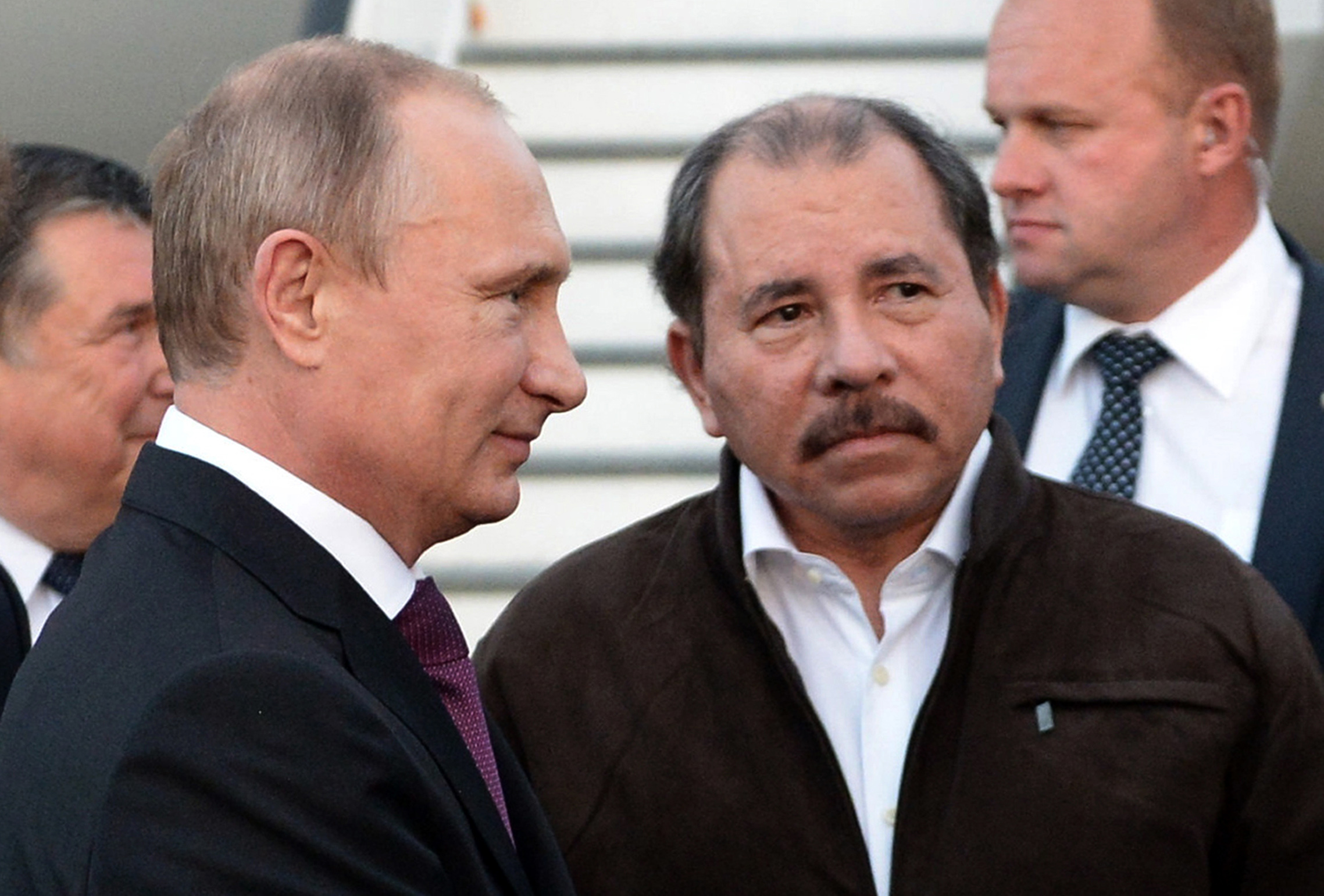
In late April Russia shipped the first 20 of 50 T-72B tanks ordered by Nicaragua—causing a Cold War Back to the Future moment for Latin America watchers.
The cost of the 50 tanks reportedly totals $80 million. That is $9 million more than Nicaragua’s total 2015 defense budget. The acquisition of tanks is particularly perplexing to many in the region since Nicaragua has relatively good relations with its neighbors, has a growing tourist industry, and can boast in recent years as being the safest country for foreign tourists in all of Central America. Additionally, the ruling Sandinista party (FSLN) does not face a serious a challenge in the pending November elections.
This puzzling move turns out to be one of several in recent years in which Russia has provided foreign assistance and weapons sales to their old allies in the ruling FSLN party under President Daniel Ortega.
According to U.S. Army Training and Doctrine (TRADOC) analyst Brenda Fiegel, in 2008 Russia provided Nicaragua with $10 million in foreign aid and provided the Nicaragua military with two modern troop-transport helicopters. Russian Military aid increased to $26.5 million in 2011, and a “fleet of Tiger armored vehicles” was provided by Russia in 2013. President Vladimir Putin made a quick visit to Nicaragua in 2014, and soon after that visit the Nicaraguan Parliament approved the building of Russian GLONASS tracking station on Nicaragua’s Caribbean coast. Additional sources, including past statements by Russia’s ambassador to Nicaragua, indicate that the satellite tracking station may also include a port facility for Russian ships to use for resupply and refueling when operating in the area. That detail remains unclear at this point.

The space-tracking base also generated media attention last month when thousands of Nicaraguans from the Caribbean coast traveled to the capital, Managua, to protest the continued encroachment on their lands by these foreign-sponsored projects. The building of the Russian base, and especially the Nicaragua Canal mega-project, sponsored by the Hong Kong-based HKND corporation, have met stiff resistance from a coalition of farmers, fishermen, and environmentalists. The eminent domain issues with those foreign projects are forcing thousands of subsistence farmers from their lands.
Russian media claim the Nicaragua tracking station will improve the GLONASS navigation system (an alternative to the U.S. GPS system). Nicaraguan government supporters of the base claim that the project will make Nicaragua a Central American leader in space.
These echoes of the Cold War beg the question—why? It does not appear to be domestic politics, or some ambitious plan of the Nicaraguan government; rather, it is more likely driven by Putin’s desire to create mischief in America’s sphere of influence at a low cost, while providing some direct benefit to Russia’s ailing economy.
That conclusion is supported in part by a report in Costa Rica’s English-language ticotimes.net, which cited Costa Rican political scientist Carlos Zamora. who said, “As erstwhile buyers of Russian material, like Venezuela or Brazil, have fallen on hard times economically, the sale [of tanks] to Nicaragua was ‘oxygen’ to Russia’s markets.”
Under President Hugo Chavez, Venezuela accounted for 80 percent of Russian weapon sales in Latin America, and that market has now wilted with Venezuela’s current economic collapse.
The Pan-American Post cited Luis Fleschmann, a consultant for the Center for Security Policy as saying, “Given that Russia sees itself as a competing empire to the United States and the West, it is logical for it to aim to expand its influence in countries that have traditionally belonged to the U.S. sphere of influence.” Fleischmann believes his theory was strengthened after Putin’s last visit to Latin America. “The president focused on countries that are hostile (Cuba and Nicaragua), aspire to minimize U.S. influence in the region (Argentina) or jealously compete with the United States for global status (Brazil).”

The passing of Chavez in 2013, and Venezuela’s current severe economic problems, are a major loss to Nicaragua and other poor Latin American countries that were receiving, loans, aid, and oil credit through Chavez’s Bolivarian Alliance for our America (known as ALBA). That loss left Nicaragua looking for new sources of income and aid at a time when U.S.-Russian relations had reached their lowest point since the end of the Cold War—enter China with the canal project, and Russia with offers of military and foreign aid.
Thus far, these Back to the Future Russian deals have not generated the kind of buzz here in the United States that they did in the heady days of the post-Sandinista revolution. If Putin was hoping to produce a mid-1980esque U.S. overreaction to Russian meddling in America’s sphere of influence, then he has failed. Rather, those who seem most upset by Nicaragua’s expenditure of millions of dollars on tanks, and the building of a Russian satellite tracking base, are the poor peasant farmers and fishermen who have for so long dreamed of a better future for Nicaragua.




